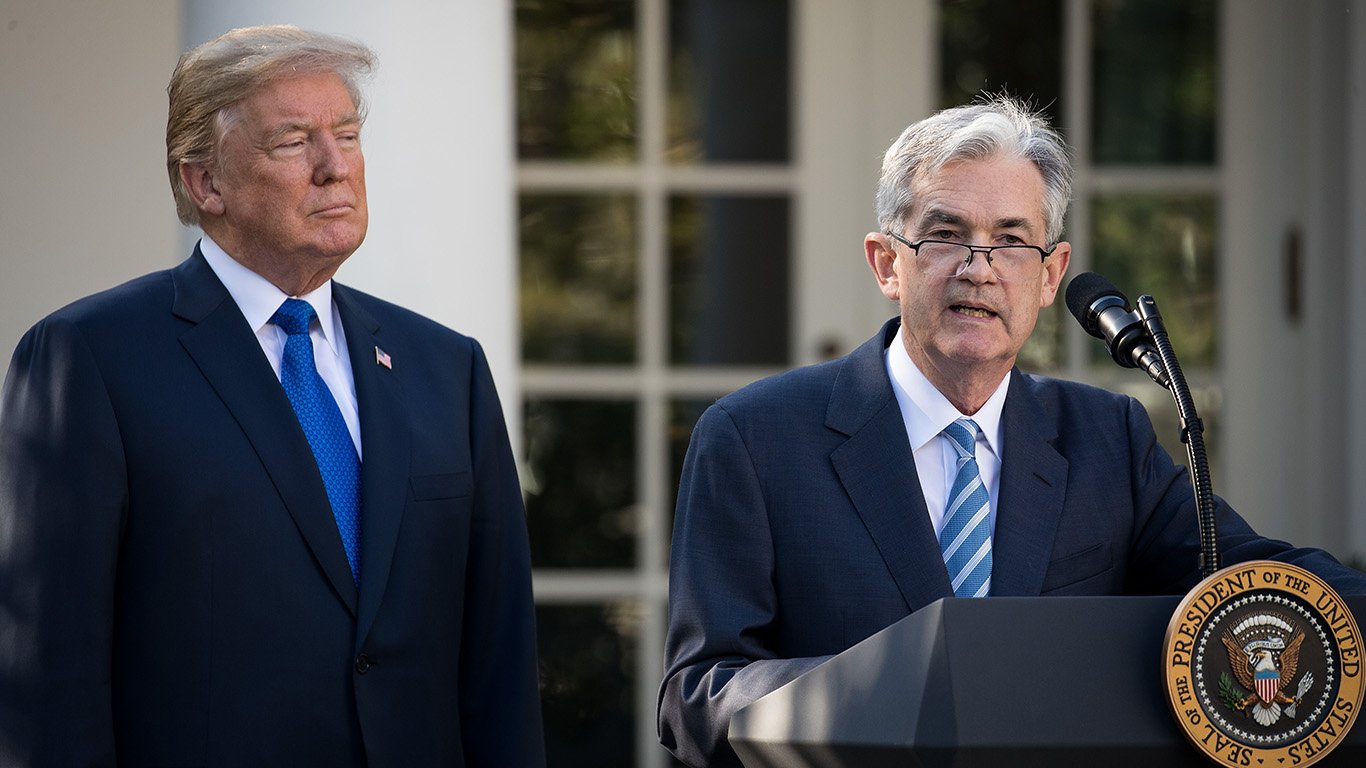

As expected, the Federal Open Market Committee (FOMC) on Wednesday announced that the Federal Reserve will lower its policy interest rate from a prior range of 2% to 2.25% to a new range of 1.75% to 2%. The FOMC cited solid job gains, the low unemployment rate, strong household spending as indicators of “moderate” growth in economic activity.
Seven committee members, including Fed Chair Jerome Powell, voted to reduce the fed funds rate while three members voted against the change. James Bullard, president of the St. Louis Fed, wanted a cut to a new range of 1.5% to 1.75% while Esther George, president of the Kansas City Fed and Eric Rosengren, president of the Boston Fed, wanted the prior rate left unchanged.
The Fed also released its latest economic projections. The bank expects 2019 GDP growth of 2.1% to 2.4%, an increase of 0.1 points to the lower end of the June projection. The low-end of the 2020 GDP growth projection rose by 0.2 points to 1.7% while the high end remained unchanged at 2.3%. The projection for 2021 also rose by 0.2 points at the low end to 1.7% while the high end remained at 2.1%. The first projection for 2022 growth came in at 1.6% to 2.1% and the longer-term projection was unchanged at 1.7% to 2.1%.
Unemployment is expected to remain low, in a range of 3.5% to 3.8% for this year and 3.3% to 4% next year. Both estimates are unchanged from June. Core personal consumption expenditure (PCE) inflation is projected to fall in a range of 1.6% to 1.8% this year and 1.7% to 2.1% next year. The Fed funds rate range for this year is projected at 1.6% to 2.1%, a sharp drop from the June projection of 1.9% to 2.6%.
Some analysts had been expecting (hoping for?) another round of quantitative easing, but the FOMC did not go down that road. The President was also among those disappointed by the Fed’s decision:
Jay Powell and the Federal Reserve Fail Again. No “guts,” no sense, no vision! A terrible communicator!
— Donald J. Trump (@realDonaldTrump) September 18, 2019
Others, including former Treasury Secretary Lawrence Summers and co-author Anna Stansbury, have argued that central banks, including the Fed, have reached the limit of what they can accomplish by tweaking monetary policy with the goal of setting inflation rates:
There are strong reasons to believe that the capacity of lower interest rates to stimulate the economy has been attenuated – or even gone into reverse. … What is needed are admissions of impotence, in order to spur efforts by governments to promote demand through fiscal policies and other means.
Markets reacted badly to the FOMC announcement and to the implied decision to cut rates just once more this year. The Dow dropped about 0.6% to 26,94418 after making an initial move higher. The S&P 500 index is down about 0.7% for the day at 2,984.55 and Nasdaq Composite has dropped about a full point to 8,102.42.
Sponsored: Attention Savvy Investors: Speak to 3 Financial Experts – FREE
Ever wanted an extra set of eyes on an investment you’re considering? Now you can speak with up to 3 financial experts in your area for FREE. By simply
clicking here you can begin to match with financial professionals who can help guide you through the financial decisions you’re making. And the best part? The first conversation with them is free.
Click here to match with up to 3 financial pros who would be excited to help you make financial decisions.
Thank you for reading! Have some feedback for us?
Contact the 24/7 Wall St. editorial team.



